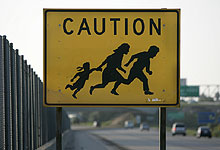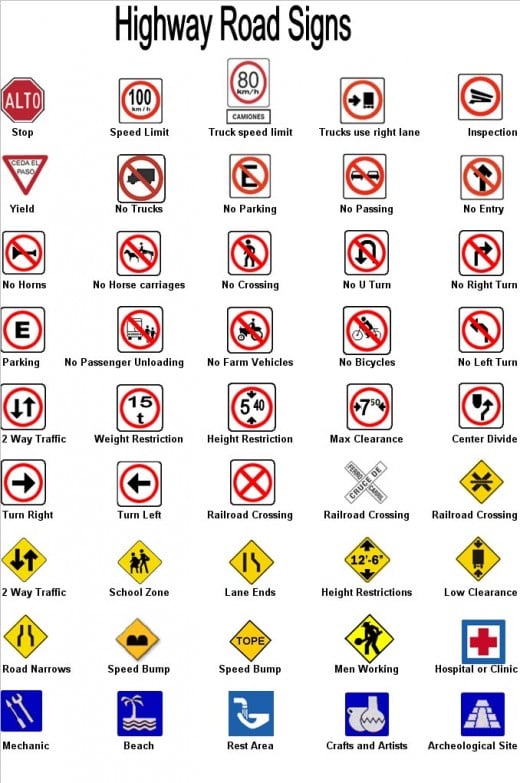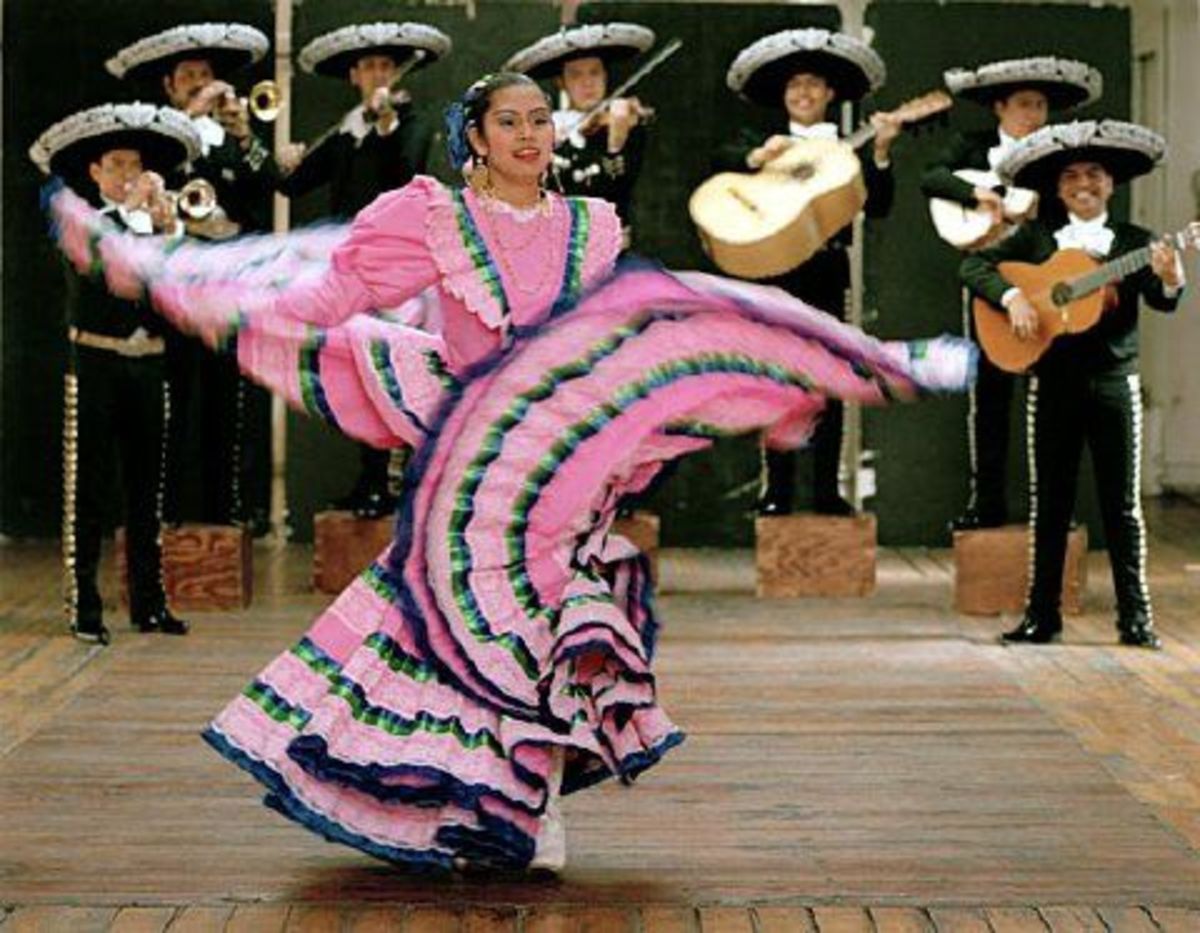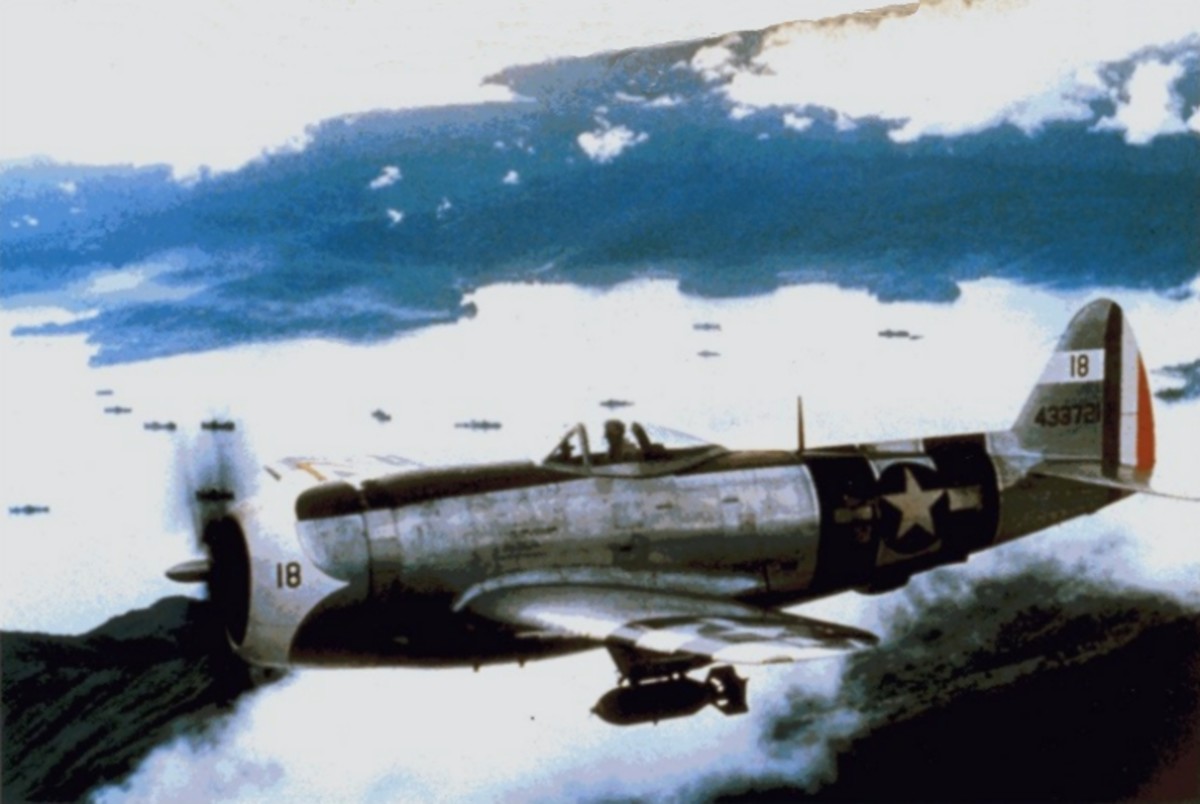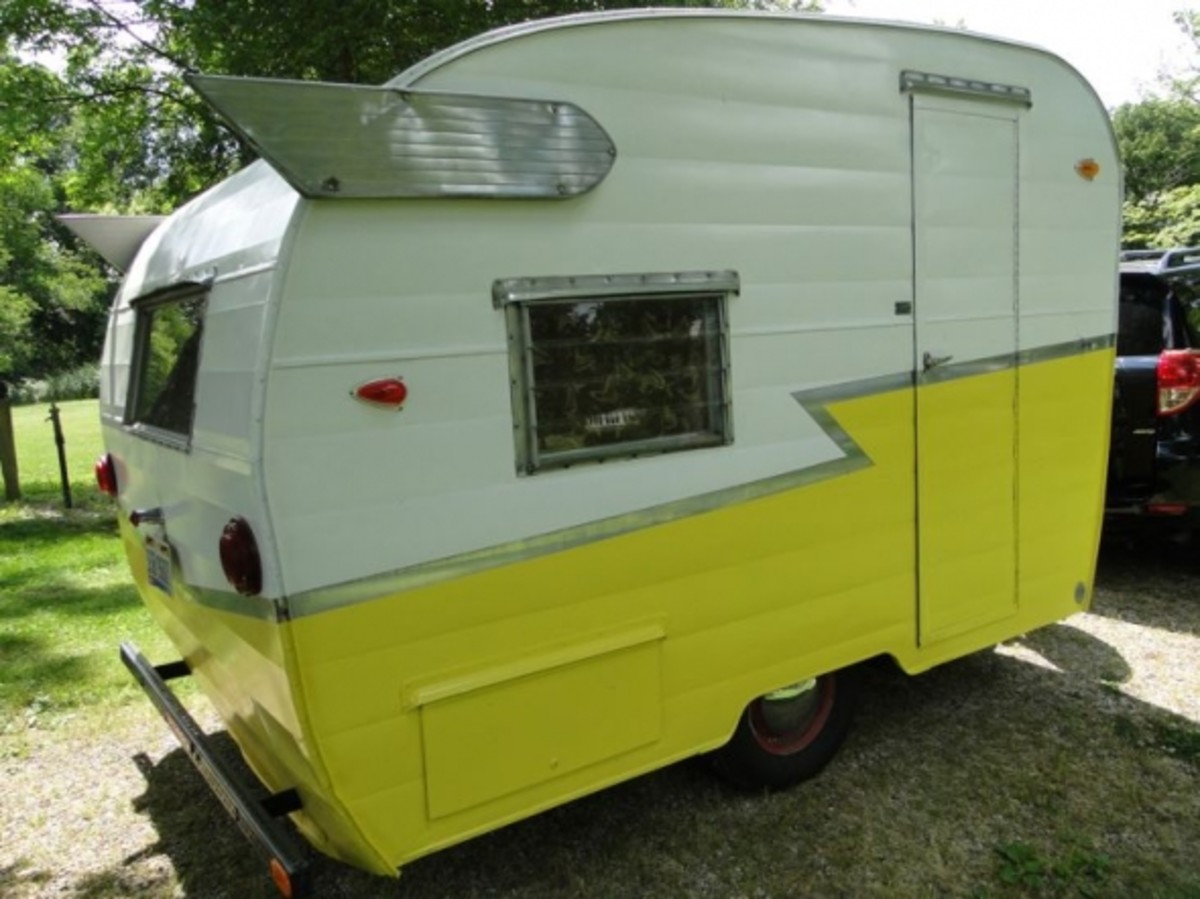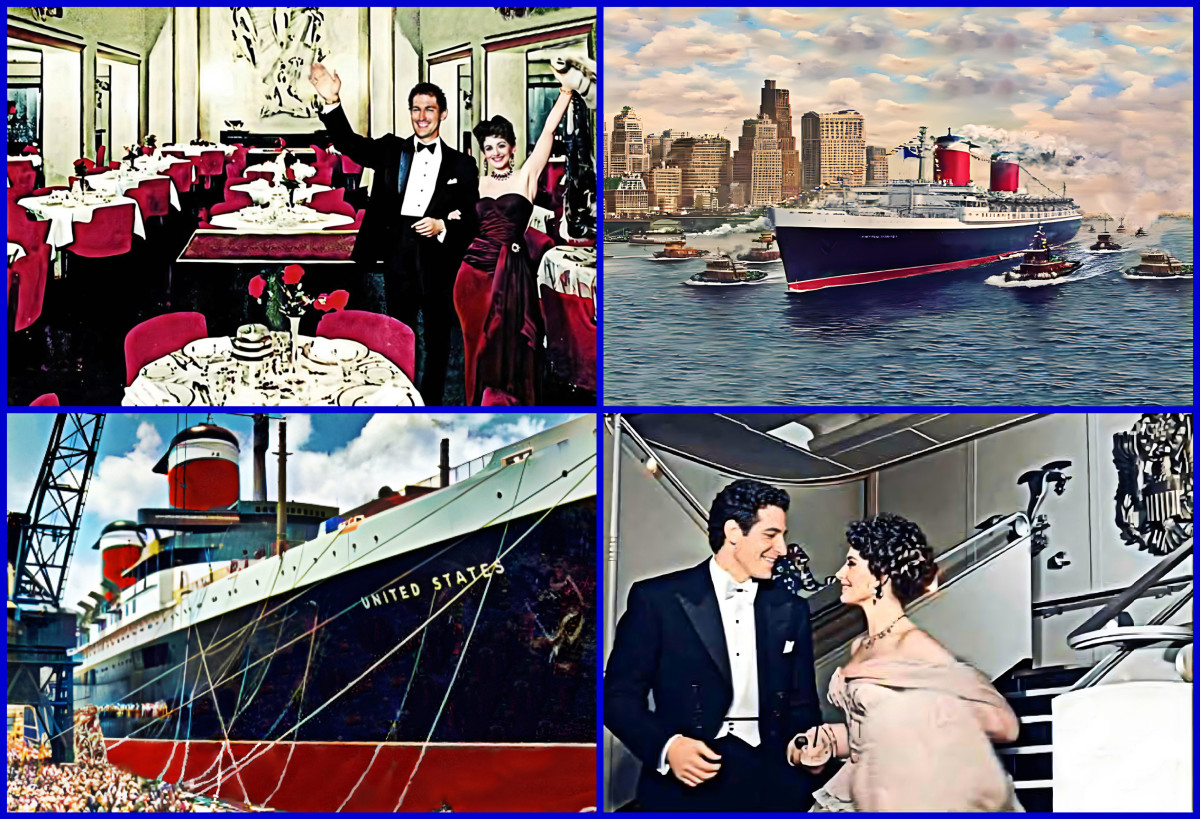Explaining Some of Mexico's "International" Road Signs
So far, Mexico hasn't had to warn its people to watch out for Gringo wetbacks!
Click thumbnail to view full-size


Mexican Road Signs Can be Baffling.
More and more people from Europe are going further afield from the traditional sun spots of Spain’s Costas, Greece, Cyprus and other Mediterranean Destinations. The US east coast attracts many, finding Florida both affordable and well serviced by economy flights. Mexico, too, sees many more Brits and Germans, etc., these days, although the dismal performance of the pound Stirling of late has held this in check somewhat.
Due to the tremendous competition among car rental companies, both international and local, at entry points to Mexico, such as Mexico City’s teeming Benito Juarez Airport, and the ease of searching for the best rates and booking online, renting a car by the week or longer has become far more affordable over the last couple of years. Many US and Canadian visitors drive to the country, of course.
This means more visitors take to the roads than previously, heading to all points north and south of the mega-capital of nearly 30 million residents. Many go via Cuernavaca to the coast at Acapulco, then continuing north to Puerto Vallarta, and perhaps returning by way of Tepic; on inland through Tequila, to Guadalajara, Mexico’s number three city and the best place for local artisans.
Others head due north to Queretaro, San Miguel de Allende, Guanajuato and San Luis de Potosi, Mexico’s city of churches.
This enables them to visit the pyramids just north of Mexico City.
Still more want to explore the delights of Michoacan, with its Lake Patzcuero; Mexico State and the reserve of the Monarch butterflies. In this huge Republic, there is plenty of choice and many good guides to help visitors decide.
But the one area causing foreign drivers in Mexico to scream, swerve in dismay and say “Never Again!” are the confusing and very different road signs. Although these have been falling in line with international dictates for years, many still possess a kind of macho individuality, especially in rural, mountain areas, something not generally found in many European countries nor much of the flat parts of the USA. And, or course, the advisories are in Spanish.
One local sign always confusing to visitors, so much so, that they often stop and photograph it, is “Tire Basura.” In the UK, we spell the word “Tyre,” so it may not mean quite as much to British motorists, but it does cause the Gringo cuz’s a bit of head scratching. “Hey, Betsy-Lee, it says “basura” is rubbish in the dickshunery, d’ya think these beaners mean throw your old tares here?” Nope. The secret is the verb, “tire,” (say teeray), which means to throw. Or not throw, actually, as the sign usually has a red slash across it with the word “No.” So what we have is “Don’t throw rubbish here.” (Or anywhere along the highway).
You will see many, many signs warning of stock crossing in this still agrarian economy, where putting up expensive fencing all along the thousands of miles of highway is an unaffordable luxury. This is the triangular white sign with a black “vaca” cow, or “toro” bull on it. Unfortunately, the poor old “Ganado” cattle, can’t read, so they amble up to just round the next shady blind bend to cross, so do slow right down in any area you can’t see well ahead. If you do hit a farm animal and it dies rather than you, you will be asked to pay for it there and then, unless your car still allows you to make good your escape. As the going rate for a large cow might be around $1000 US, better careful than sorry. You will see several dead cows along the way on a long trip here.
If you hit a child, you may not survive the wrath of locals, so do be careful, (Not to mention drunks, which often seem suicidal in Mexico).
Don’t be confused in villages, towns and cities that have a bullring. This is an oblong, gray and white sign again, but with the head of a bull in it and perhaps some direction or distance advisories.
The sign for the mechanic is the universal one with a spanner, or crosses spanners in it, and the ward “Taller,” which means workshop, not that the bloke who fixes the car is seven feet tall.
Many tourist guides show the Mexican road signs, but not all give you an idea what the Spanish means. Below is an idea of some of the more common and important.
Esta camino no es de alta velocidad: Not a high speed highway
No rebase: No passing
Curva peligrosa: Dangerous curve
Avistamiento de ballenas: Whale sighting area!
Ponga la basura en su lugar: Put the rubbish in its place
Concede cambio de luce: Dip lights for oncoming traffic
Obedezca las senales: Obey traffic signals
Utilice el cinturon de seguro: Use your seat belt
No maltrate las senales: Don’t damage road signs
Grava suelta: Loose gravel
Tramo en reparacion: Road works ahead
Maquinas trabajando: Heavy equipment ahead
Guerde su distancia: Don’t tailgate
Precaucion zona de Ganado: Cattle zone ahead
Si toma no maneje: Don’t drink and drive
Con neblina ensienda sus luces: If foggy turn on headlights
Respete los limites de velocidad: Obey posted speed limits
Termina Puente en construcion: Bridge repaired
Puente: Bridge
Puesto de control military: Army checkpoint
Topes: Speed bumps
Un solo carril: Single lane ahead
Desvacion: Detour
Disminuya su velocidad: Slow down
No deje piedras sobre la paviemento: Don’t leave rocks on the highway
Conserve limpia la carretera: Keep the highway clean
Zona de vados: Flood and wash zone
Cruce de peatones: Pedestrian crossing
No rebase con raya continuar: No overtaking on solid white line.
I will add to these as I come across them and in time for your trip!

